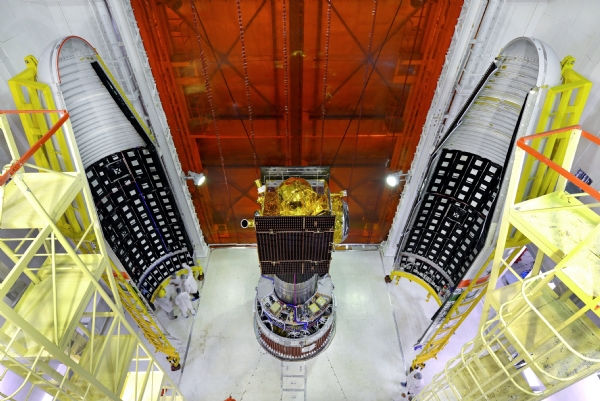NB Explains | ISRO likely to launch NVS-01 navigation satellite on May 29, Know about it
17 May 2023 19:14:57
The Indian Space Research Organisation (ISRO) is likely to launch NVS-01, a navigation satellite on-board the Geosynchronous Launch Vehicle or GSLV MK-II, on May 29, said a senior ISRO official.

Know about NVS-01
The satellite will replace the IRNSS-1G satellite launched in 2016,” said the official who did not want to be named. The NVS-01 satellite is to replace the IRNSS-1G satellite that was launched in 2016 and has a mission life of 12 years. Among the still functioning satellites in the constellation, the earliest to be launched is IRNSS-1B launched in 2014 with a mission life of 10 years.
“The launch of NVS-01 is scheduled around May 29. This will be a return flight mission for the GSLV launch vehicle, which will carry the next generation NavIC satellite. This satellite will replace the IRNSS-1G satellite launched in 2016,” said the official who did not want to be named.
#Thread |
— INDIA NARRATIVE (@india_narrative) May 16, 2023
Indian Space Research Organisation (ISRO) is likely to launch a new navigation satellite, NVS-01, aboard the GSLV MK-II, on May 29
The last navigation satellite from ISRO was launched in 2018, & the new one will be launched to replace an old satellite IRNSS-1G (1/6) pic.twitter.com/T3V9G1mqxg
To meet the positioning, navigation and timing requirements of the nation, ISRO has established a regional navigation satellite system called Navigation with Indian Constellation (NavIC). NavIC was erstwhile known as Indian Regional Navigation Satellite System (IRNSS).
NavIC is designed with a constellation of seven satellites and a network of ground stations operating 24x7. Three satellites of the constellation are placed in geostationary orbit and four satellites are placed in inclined
geosynchronous orbit. The ground network consists of a control centre, precise timing facility, range and integrity monitoring stations, two-way ranging stations, etc.
NavIC offers two services--standard position service (SPS) for civilian users and Restricted Service (RS) for strategic users. These two services are provided in both L5 (1176.45 MHz) and S band (2498.028 MHz). NavIC coverage area includes India and a region up to 1,500km beyond Indian boundary. NavIC signals are designed to provide user position accuracy better than 20m and timing accuracy better than 50ns.